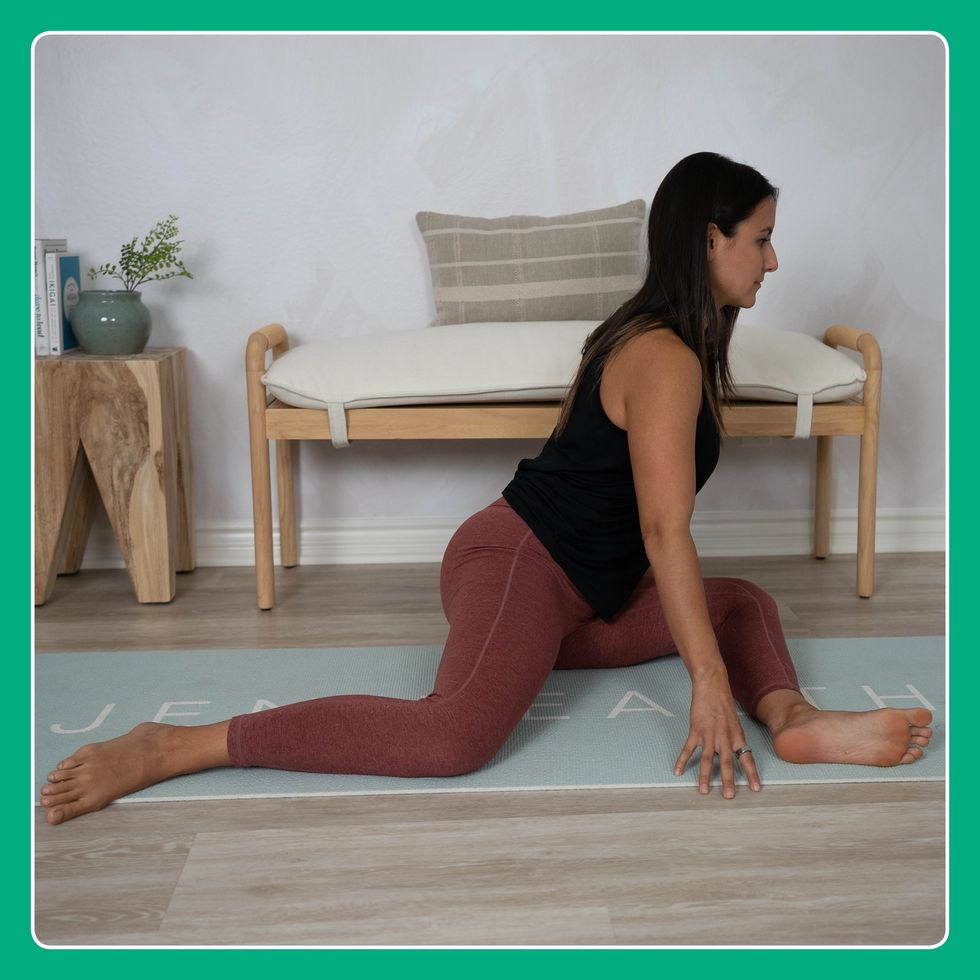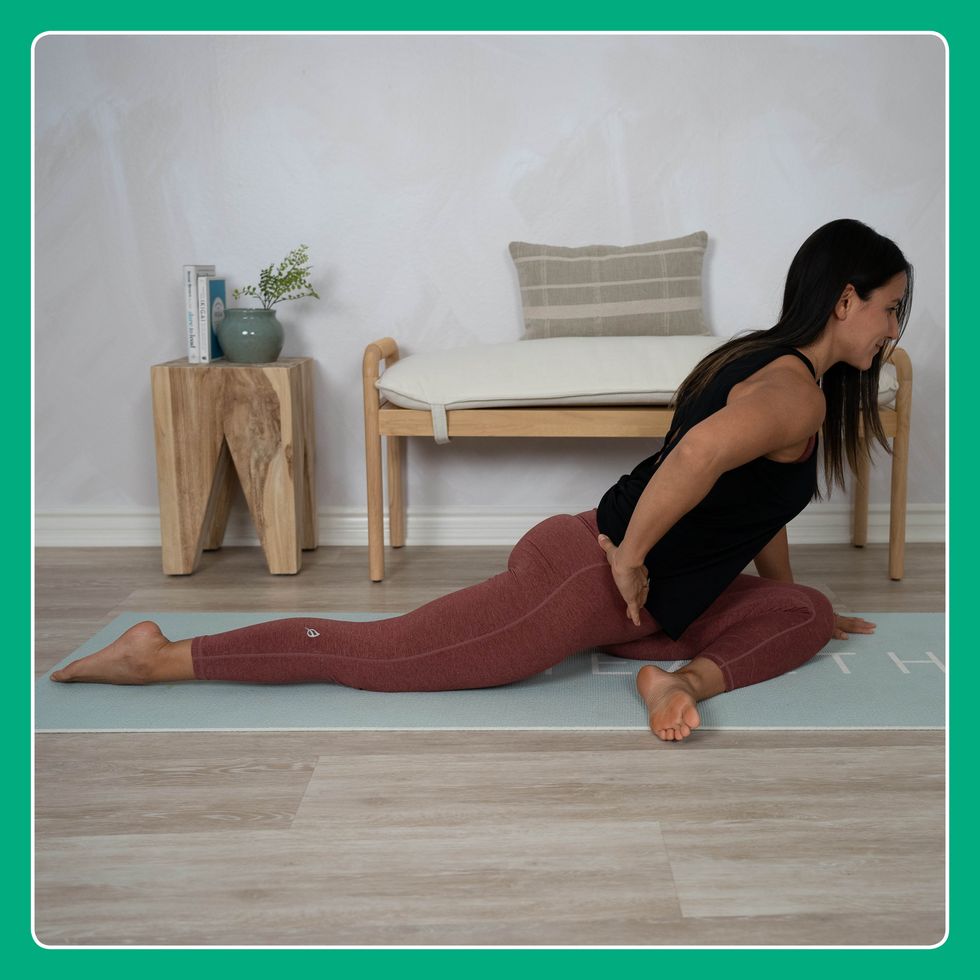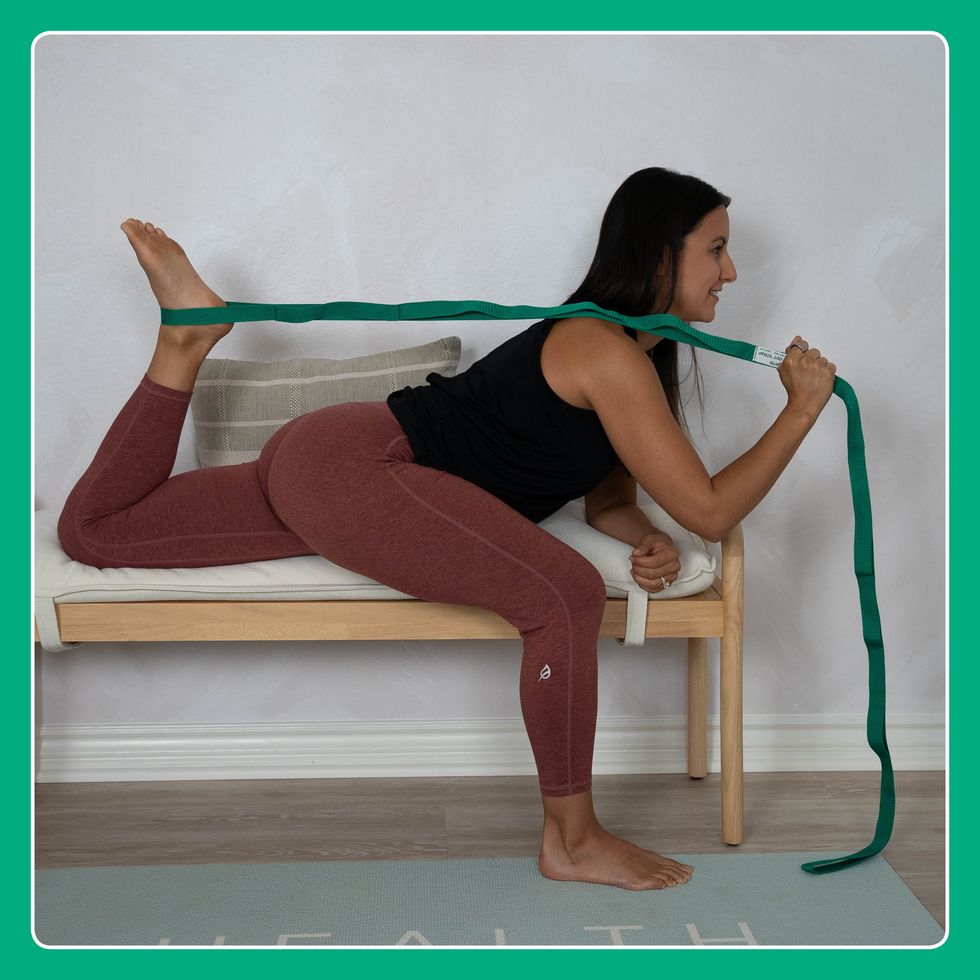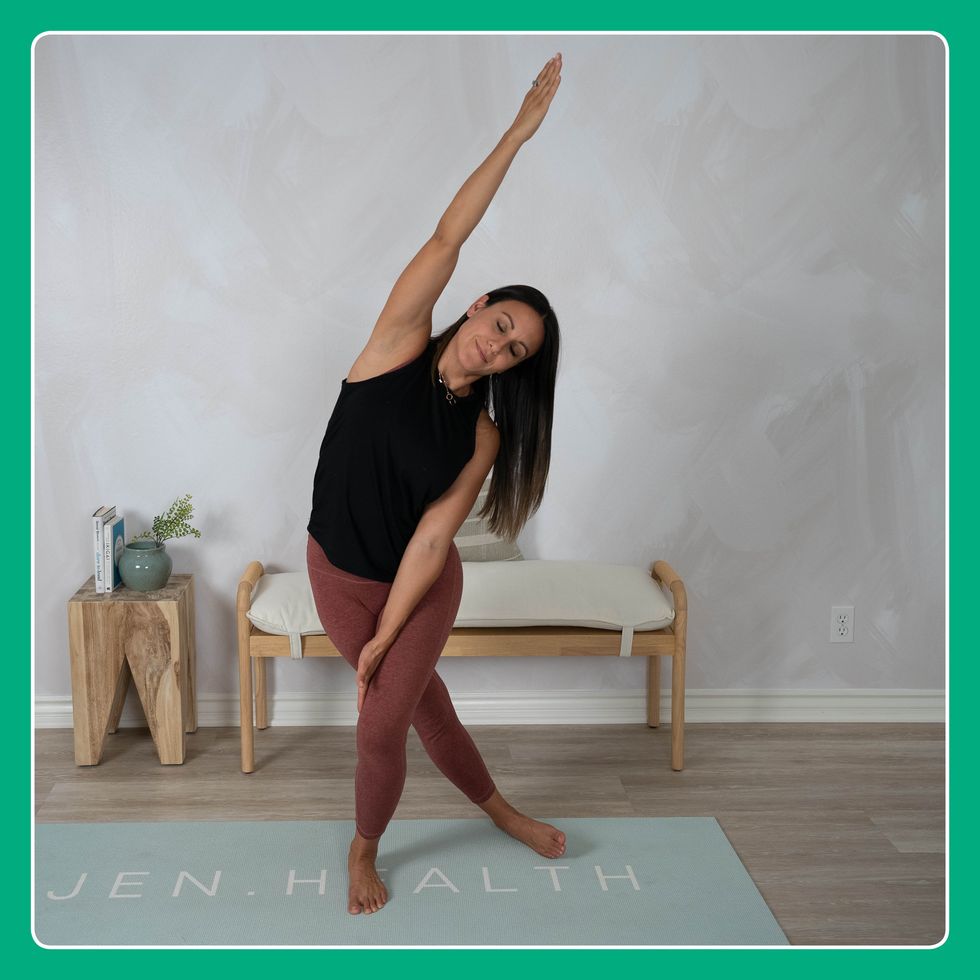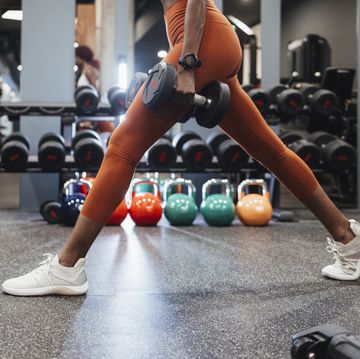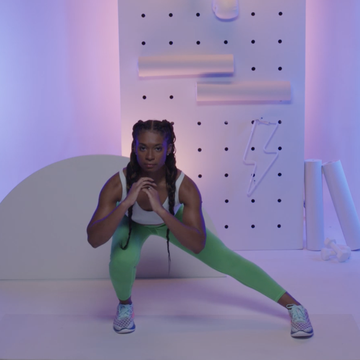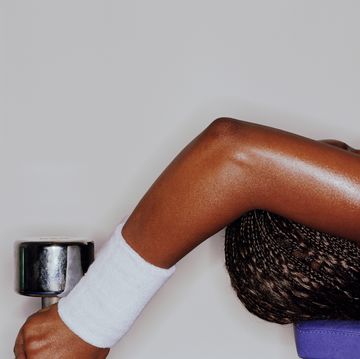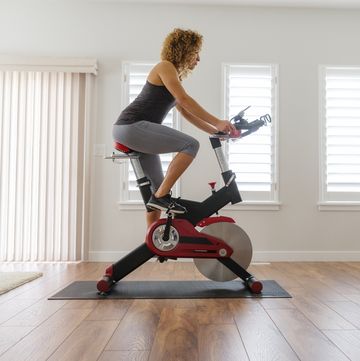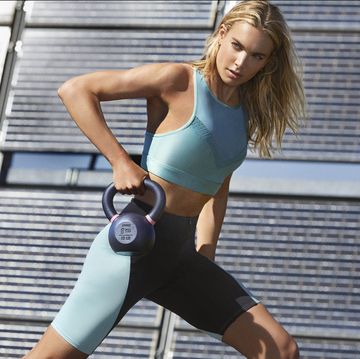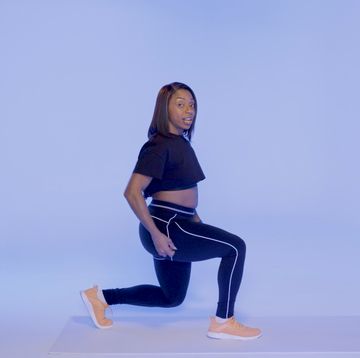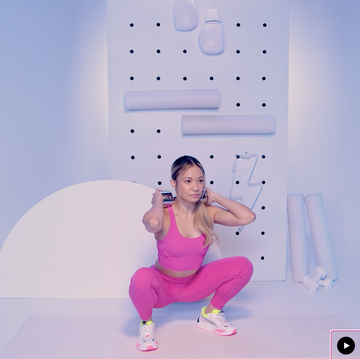When I say “IT,” you might think “information technology” instead of “iliotibial,” and TBH, I don’t blame you. I'm not here to chat tech—instead, let’s get the lowdown on a lower body tendon called the iliotibial band (a.k.a. the IT band).
First things first: The IT band is a thick layer of connective tissue, according to physical therapist Jen Fraboni, DPT. Your IT band is on the outside of your leg, running from your hip to your kneecap, per Cleveland Clinic.
Meet the expert: Jen Fraboni, DPT, is a physical therapist with a degree in kinesiology who offers private sports therapy.
One of its roles is to keep you safe. “It’s [a] protective mechanism that’s been built within our body,” Fraboni says. It helps to prevent you from moving from side to side too much when you’re moving forward, she explains. (Read: It works hard.)
So, what causes tight IT bands anyway? It’s probably resulting from tight hips, per Fraboni. If the muscles around the IT band (like your quads and hamstrings) are tight, that could connect to what you feel on the sides of your legs, too.
How To Stretch Your IT Bands
Knowing what triggers discomfort reveals how and where to stretch (quads, hamstrings, and hips). “It’s generally better to address what’s happening around [the IT band], because we can make changes to the muscles around [it],” Fraboni says. You aren’t really going to lengthen the IT band itself, she adds.
If you open up your hip mobility, release some of the tension in your hamstrings, and loosen up the quads, that helps take the pressure off of your IT bands, Fraboni says. Stretching is a good first step, then you can add more stability work and strength training to maintain the loosey-goosey feels. That combo keeps certain muscles from working overtime and causing more tightness.
A Quick Word On IT Band Syndrome (ITBS): This condition occurs when your IT band gets too tight and rubs against your hip or knee bones, resulting in irritation or swelling, per Cleveland Clinic. Usually, ITBS creates acute pain or tenderness around the knee, per Fraboni. If you think you might have ITBS, Fraboni says you can certainly start with stretches—but you might want to consult a healthcare professional for more individualized advice.
Now, read on for Fraboni’s six recommended IT band stretches you can try for relief when the area feels oh-so tight, including her step-by-step instructions and modifications for each one.
6 Stretches To Relieve Tight IT Bands
Relief is in sight, but it may take a few weeks to get results from stretching. “In general, with consistency, it could be as early as one month and as late as six months to a year,” depending on how much activity and mobility work you’ve already been doing, per Fraboni. Stretching is safe to do four to five times a week, she adds.
1. Hip 90/90 Stretch
- Start by sitting on the ground with your legs open and knees bent to 90 degrees.
- Drop your knees to one side. The idea is to get your front leg out in front of you at a 90-degree angle, have a 90-degree angle between your legs, and have your back leg at a 90-degree angle.
- Facing the leg in front, lift your chest to straighten your back and gently tip your hip bones forward into your front leg. Stop as soon as you feel a stretch into your front hip.
- Hold this position for one minute, taking long, slow deep breaths.
- Rotate your body toward your back leg as you attempt to sit your bottom toward the floor.
- Use your hand or elbow to gently rub into your tensor fasciae latae (TFL) muscle on your back leg to help your hip relax toward the floor. Your TFL is located to the outside of your hip bone and a half inch down toward your leg.
- Hold this position for one minute.
- Switch legs to the opposite side and repeat.
Form tip: If you feel tension in your knees or if it is difficult to sit in this position due to tightness at your hips, you can stack two pillows under your bottom to prop your body up. This can also be done on a bed with pillows propped under your bottom if it is too difficult to get down to the ground.
2. Pigeon Pose
- From a high plank position, bend one knee between your hands and place your body on the ground. Do not force your foot out to a parallel position. Allow your knee to bend as naturally and needed for your body to avoid torque at the knee joint.
- Try to keep your back knee facing down toward the ground and your hips level toward the floor as much as possible.
- Support your body with your hands as you allow your hip bones to tip forward into your thighs with your back straight.
- Hold for one to two minutes on each side, using slow, deep exhales to melt deeper into the stretch.
Pro tip: Perform any static stretches (holds) after your workout, or at least not immediately before you sweat, per Fraboni.
Pigeon Pose Alternative #1:
- While sitting on a chair, cross one ankle over your other knee in a bent position.
- Keep your back straight as you tip your hip bones toward your thighs to stretch into your hip.
- Hold for one to two minutes on each side, using slow, deep exhales to melt deeper into the stretch.
Pigeon Pose Alternative #2:
- While standing, place your leg in a bent position on an elevated surface.
- Keep your back straight as you tip your hip bones toward your thighs to stretch into the hip.
- Hold for one to two minutes on each side, using slow, deep exhales to melt deeper into the stretch.
3. Seated Glute Stretch
- While sitting, bend one knee flat on the ground with the outside of your leg flat and your foot in toward your body.
- Cross your opposite foot over your leg to reach the floor.
- Gently pull your knee toward your chest as you rotate into your knee.
- Try to keep your bottom flat on the floor.
- Hold for one to two minutes on each side.
Glute Stretch Alternative #1:
- While standing, cross one leg over your body and rest your foot on an elevated surface.
- Gently pull your knee toward your chest as you rotate into your knee.
- Try to keep your pelvis even as you rotate into your leg and stretch.
- Hold for one to two minutes on each side.
Glute Stretch Alternative #2:
- While sitting on a chair, cross one leg over your body and rest your foot on the chair.
- Gently pull your knee toward your chest as you rotate into your knee.
- Try to keep your bottom down as you rotate into your leg and stretch.
- Hold for one to two minutes on each side.
4. Side Lying Quad Stretch
- Lying on your side, bend your bottom leg out in front of you in a resting position.
- Bend your top knee and grab your ankle with your hand.
- As you hold your ankle, gently tuck your tailbone under and give a slight squeeze of your glutes to stabilize your pelvis.
- Allow your knee to gently drop toward the ground as you stretch the front of the quadriceps as well.
- Hook your bottom ankle over your top knee to better stabilize the stretch.
- Breath deep and hold for one to two minutes on each side.
Quad Stretch Alternative #1:
- Lie face down on a couch or bed and allow your outside leg to drop into a lunge on the floor.
- Use a belt, strap, or towel to wrap around your foot/ankle as you pull your heel toward your bottom.
- Pull the belt, strap, or towel over your opposite shoulder to get a slight lateral line of pull along the outside of your quadriceps.
- Slightly tuck your tailbone under and squeeze your glutes to intensify the stretch.
- Breathe deep and hold one to two minutes on each side.
Quad Stretch Alternative #2:
- While standing, hold onto a counter or sturdy chair in front of you. Place one foot on a couch or elevated surface behind you.
- Stand tall and slightly tuck your tailbone under and squeeze your glutes.
- Lean back into the stretch as tolerated.
- Breathe deep and hold one to two minutes on each side.
5. Adduction Hamstring Stretch
- Lie flat on your back and bend one knee up to the ceiling.
- Use your opposite hand to gently grab the outside of your thigh and bring your leg across your body.
- Stabilize the hip of the leg in the air with the other hand.
- Straighten out your leg slowly, allowing your foot to slightly flex back toward your face and your big toe to drop toward the ground.
- As soon as you feel a stretch along the side and back of your leg, bend your knee again.
- Bend and straighten on each side 10 times.
Pro tip: If getting to the ground is difficult, this can also be done in bed. (Or if you're already in bed go for it.)
6. Standing QL Stretch
- From a standing position, bend one leg and cross your opposite leg straight behind until the outside of your foot meets the floor.
- With the same arm as the front, stabilizing leg, slide your hand on the inside of your knee and press your knee into the outside of your hand.
- With the opposite arm, reach up to the sky and over your body toward your leg in back.
- Breathe into this long side body stretch as you stretch the fascia along the side of the trunk, hip, and leg.
- Hold and take five slow, deep breaths.
- Repeat on the other side.
Pro tip: If you aren’t feeling any improvement, Fraboni recommends seeing a physical therapist to help you pinpoint and address the root cause of your symptoms.
Does foam rolling actually help IT bands?
If you feel a tight spot and run for your foam roller, you're not alone. Fraboni notes that some people also like to foam roll their IT band. Foam rolling won't lengthen the tissue, but it can offer relief. You can bring some stimulation to the area and help calm it down temporarily, she says.
Just proceed with caution: Foam rolling the IT band may actually cause more pain for some people, per Fraboni. But as long as you’re not eliciting or worsening pain, she says, foam rolling to take pressure off your IT bands should be A-okay.
Erin Warwood is a San Francisco-based writer, runner, and sparkling water enthusiast. She holds a B.B.A. from the University of Notre Dame and an M.S. in journalism from Northwestern University. In her free time, you can find her watching Survivor, trying new Peloton workouts, and reading Emily Giffin novels. Her ultimate goal: become a morning person.

